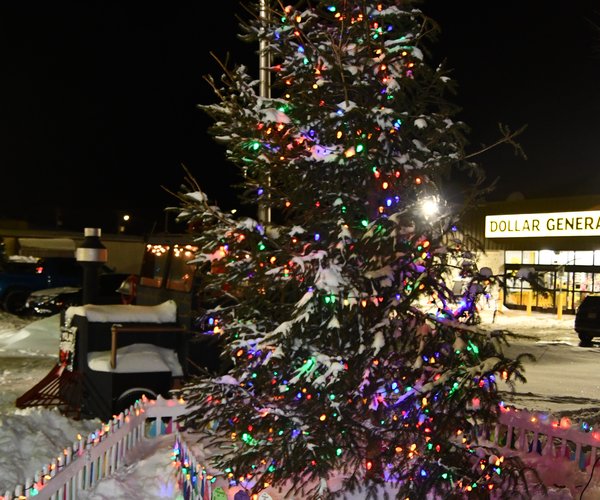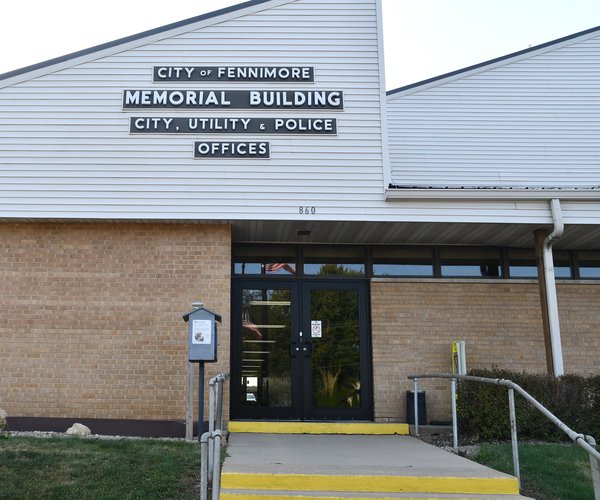One year ago Platteville School District voters approved a $36 million building referendum.
School district voters may get another referendum 4½ months from now, but not for adding or renovating school buildings.
The Board of Education is considering holding a referendum April 2 on exceeding the school district’s state-mandated revenue cap and thus increasing property taxes.
An April 2 vote would allow the school district to adjust its 2024–25 budget based on more revenue authorized by a successful referendum. The amount is likely to be set at the Dec. 13 school board meeting and approved at the board’s Jan. 10 meeting.
“We cannot cut our way to excellence, so we have to find a solution,” said superintendent Jim Boebel. “If an operational referendum is supported, we can make those adjustments; if it’s not supported, we still have time to make adjustments.”
The school district is facing increasing costs — 4.3 percent higher in the 2023–24 school year than one year earlier — that exceed revenue — which dropped 1.6 percent this school year — for at least the next five school years. School districts are also facing the end of the federal Elementary and Secondary School Emergency Relief Fund, part of federal COVID aid.
The school district’s policy is to have a 15-percent fund balance. The school district’s fund balance is estimated at 19 percent at the end of this school year, but 13 percent next school year, with deficits by the 2026–27 school year.
Those estimates are based on the school funding forecast model by Baird Public Finance.
“For years we’ve been waiting for the state to fix it, and it’s not happening,” said school board president Josh Grabandt. “So this is the fix; this is what they’ve put back on us.”
Boebel said an operational referendum “in our situation primarily it will be for salary and benefits, so we can continue to retain and continue to attract the best educators and the best staff we can.”
Boebel listed staff increases “that align with the changing student demographics and needs” including additional English Language Learner and high school and middle school guidance counselor positions — “all justified, verified things we needed to do to meet our student needs, but it’s just not being met with funding.” More than 80 percent of the school district’s budget is in personnel cuts.
Boebel said state per-student aid has been flat in inflation-adjusted terms since the 2015–16 school year, while, according to the Wisconsin Association of School Business Officials, the Consumer Price Index has exceeded per-student aid since 2009.
He said the Baird model “is rather accurate one year out, but each year you get away from that, there’s just too many variables that you don’t know what will happen. Think of January of 2020 compared to March of 2020.
“We know what next year’s budget will be from the state; we know what they’re going to allot for schools. We also know the trend of how our state is funding public education. And that trend is going down. So we have a situation that we need to address here shortly.”
Boebel said the school district has cut more than $1.4 million over the past five years, including $500,000 in health insurance savings by switching carriers in 2022–23, and reducing maintenance spending by $900,000 over the past five years.
The school board will be choosing between a “non-recurring” operating referendum that would increase property taxes for a set period, usually three to five years, and a “recurring” referendum for a permanent increase in property taxes.
School district voters approved a recurring referendum that ended up increasing the property tax levy by $1.5 million per year in 2006.
Boebel said choosing recurring vs. nonrecurring referenda is difficult because “you could pass a nonrecurring referendum — let’s say we go five years — and at the end of those five years you’re going to have to pass another one. There is nothing indicating that our state is going to turn it around and ithen start overfunding public schools as opposed to underfunding.”
But, he added, “in five years is that recurring amount going to be enough, or will you end up in five years having to pass another one? What a lot of other schools in our state in our state have found [is] once you jump onto this cycle, that’s just business, and you know every however many years you’re going back to your community regardless of if it’s recurring or nonrecurring.”
Most school districts in the state have passed operational referenda since 1992,when the state set school district revenue limits, according to Baird. Boebel cited a Baird statistic that 80 percent of school districts have at least 10 percent of their revenue limit supplemented by nonrecurring referenda.
Southwestern School District voters rejected an operational referendum last November.
The school board’s Operations Committee is meeting today to consider four referendum scenarios — step increases from $1.5 million to $2.5 million over five years, and $1.5 million and $2 million five-year referenda, based on 2.5-percent and 3.5-percent employee wage increases.
The scenarios would increase the school district’s mil rate from $7.59 per $1,000 this school year to as much as $8.52 per $1,000 the year after referendum proposal before mil rates are estimated to drop in the next four years of a five-year referendum.
The scenarios assume increases in health and business insurance costs and maintenance costs as well as supplies and services. The scenarios also assume $325 increases in per-student state aid that are part of the 2023–25 state budget, flat enrollment, and 2-percent property value growth per year. Also assumed is moving funding for intervention and technology positions that were federally funded to the school district.
School districts are required to hold a referendum only on regularly scheduled election days — next year, the spring primary Feb. 20, the spring general election April 2, the fall primary election Aug. 13, and the fall general election Nov. 5. School districts are restricted to two referenda per year.
The last two building referenda passed, with two-thirds voting in favor in 2016 and 57 percent last November.





